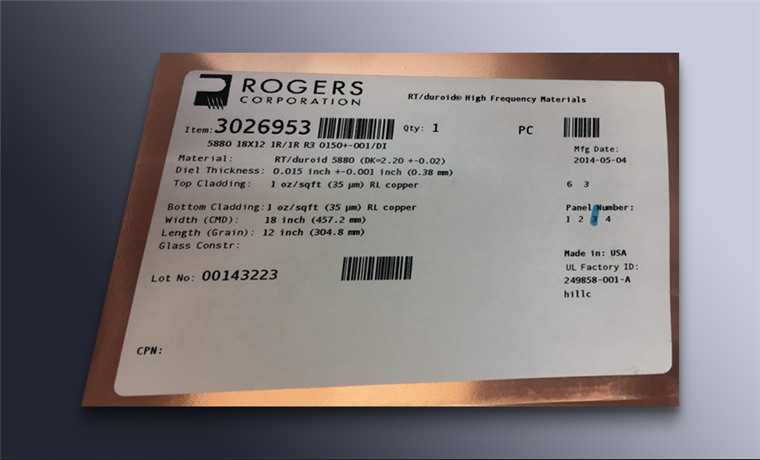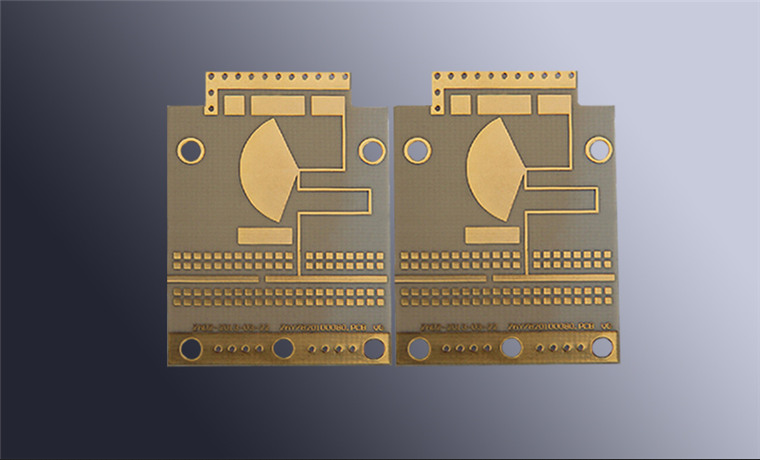High-frequency board refers to a special circuit board with a higher electromagnetic frequency, which is used for high frequency (frequency greater than 300MHZ or wavelength less than 1 meter) and microwave (frequency greater than 3GHZ or wavelength less than 0.1 meter)
The PCB in the category is a circuit board produced by operating the departmental process of the popular rigid circuit board manufacturing method on the microwave substrate copper clad board or adopting a special treatment method. Generally speaking, high-frequency boards can be defined as circuit boards with frequencies above 1GHz.
1. Classification of PCB high frequency plates.
Ceramic filling thermosetting material
Processing methods:
The processing flow is similar to epoxy resin/glass woven cloth (FR4), except that the sheet is brittle and easily breaks. When drilling and gongs, the life of the drill nozzle and gong knife is reduced by 20%.
2. PTFE (polytetrafluoroethylene) material
Processing method:
(1). Cutting material: It is necessary to save the shelter film cutting material to avoid scratches and indentations
(2). Drilling:
2.1 Use a brand new drill (size 130), one by one is the best, the pressure of the presser foot is 40psi
2.2 The aluminum sheet is the cover plate, and then the 1mm melamine backing plate is used to hold the PTFE plate tightly
2.3 After drilling, use an air gun to blow out the dust in the hole
2.4 Use the most constant drilling rig and drilling parameters (basically, the smaller the hole, the faster the drilling speed, the smaller the Chip load, the lower the return speed)
3. Via treatment
Plasma treatment or sodium naphthalene activation treatment is conducive to hole metallization
4. PTH Immersion Copper
4.1 After micro-etching (with a micro-etching rate of 20 microinches controlled), start the board from the de-oil tank in the PTH pull
4.2 If necessary, pass the second PTH, just start with the estimated cylinder and enter the board
5. Solder mask
5.1 Pre-treatment: Take acidic washing of the plates, and do not use machines to grind the plates
5.2 Pre-treatment and post-baking plate (90 degree Celsius, 30min), brush with green oil to cure
5.3 Three-stage baking: one stage is 80°C, 100°C, 150°C, each for 30 minutes (if the substrate surface is oiled, it can be reworked: wash off the green oil and reactivate it)
6. Gong board
Lay the white paper on the circuit surface of the PTFE board, and clamp it with the FR-4 base plate or phenolic base plate with a thickness of 1.0MM etched to remove copper:
As shown in the picture: High frequency and high speed board material

When selecting the substrate used in the PCB for high-frequency circuits, it is necessary to specifically examine the material DK and its transformation characteristics at different frequencies.
For high-speed signal transmission requirements, or characteristic impedance control requirements, focus on DF and its performance under the premises of frequency, temperature and humidity.
Under the premise of frequency change, ordinary substrate materials show the discipline of greater change in DK and DF values.
Especially in the frequency range from 1 MHz to 1 GHz, their DK and DF values change significantly.
According to the coating online, the DK value of ordinary epoxy resin-glass fiber cloth-based substrate material (ordinary FR-4) at a frequency of 1MHz is 4.

7. The DK value under the frequency of 1GHz changes to 4.19. Over 1GHz, the change of its DK value tends to be steep.
The trend of its transformation is to follow the increase in frequency, and then become smaller (but the transformation amplitude is not large), for example, under l0GHz, the DK value of ordinary FR-4 is 4.15, and the substrate material with high-speed and high-frequency characteristics changes in frequency. Under the environment, the change of DK value is relatively small. Under the frequency of transition from 1MHz to 1GHz, DK is mostly connected to a 0.02-scale transition.
Its DK value tends to drop slightly under the premise of varying frequency from low to high.
The dielectric loss factor (DF) of the ordinary substrate material is affected by the frequency change (except for the change in the high-frequency scale) and the change in the DF value is greater than the DK.
Its transformation discipline tends to increase, so when evaluating the high-frequency characteristics of a substrate material, the focus of its examination is its DF value transformation environment.
For substrate materials with high-speed and high-frequency characteristics, there are two different types of ordinary substrate materials in terms of their transformation characteristics at high frequencies: one type changes with frequency, and its (DF) value changes very little .
Another type is close to ordinary substrate materials in terms of the transformation amplitude, but its own (DF) value is lower.